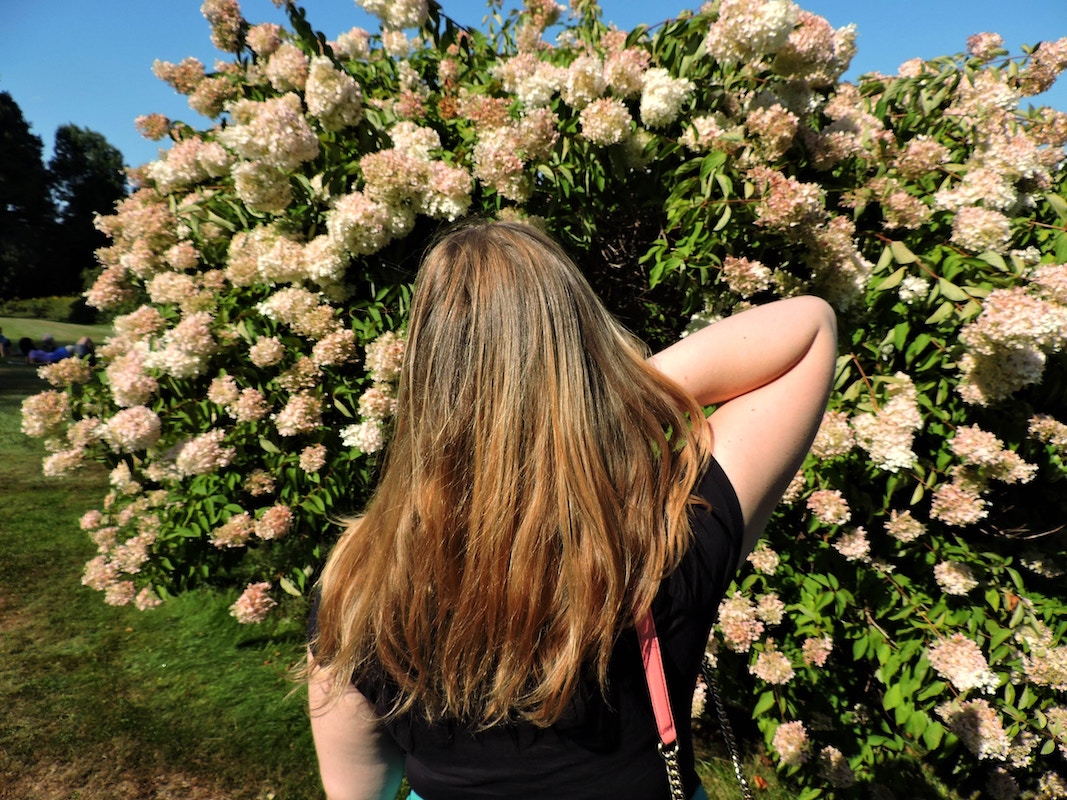Excess sebum in the hair is a common problem. While a certain amount of sebum is essential for maintaining healthy hair and scalp, too much can lead to cosmetic problems and discomfort. Find out more about the different causes of excess sebum and our solutions.
Oily hair: how do you recognise it?
Combating excess sebum in the hair is essential to maintaining healthy hair. When the scalp produces too much sebum, it can lead to oily, unkept hair, a problem many people are looking for solutions to. Identifying the signs of greasy hair is the first step towards effective treatment:
- Heavy and shiny hair : a major characteristic of oily hair is its excessive shine, which differs markedly from healthy shine.
- A lack of volume : roots weighed down by excess sebum lead to a loss of volume, leaving hair flat and lifeless.
- An oily sensation: Hair can feel sticky or oily to the touch, even shortly after washing.
- Itchy scalp: the accumulation of sebum can cause irritation of the scalp, leading to itching and sometimes the appearance of scabs.


Lack of volume and itching are often signs of excess sebum
To restore your hair's vitality, it's essential to detect and treat the warning signs of excess sebum. This awareness is the first step towards a healthy scalp and radiantly beautiful hair. Next, it's important to look into the origins of this overproduction of sebum so as to be able to remedy it effectively.
What causes excess sebum in the hair?
Excess sebum in the hair can come from a variety of sources, from hormonal imbalances to inappropriate hair care habits.
Hormonal imbalance
Hormones play a significant role in the regulation of the sebum production. Hormonal fluctuations, like those observed during puberty or pregnancy, can lead to excess sebum, as can thyroid disorders or polycystic ovary syndrome.
Nutrition and hydration
What we eat can directly influence the health of our scalp. A diet rich in saturated fats and refined sugar can encourage the overproduction of sebum, while a diet rich in sugar and saturated fats can encourage the overproduction of sebum, while a diet rich in refined sugar can encourage the overproduction of sebum whereas insufficient hydration can disturb the natural balance of the skin and scalp.
Stress
Chronic stress triggers the release of cortisol, a hormone that can stimulate the sebaceous glands. In addition, a sedentary lifestyle or insufficient sleep can also contribute to the production of excess sebum.
Genetic and environmental factors
Genetic predisposition can determine the amount of sebum your scalp naturally produces. Similarly, environmental factors such as pollution or humidity can worsen the situation.
What effect do hair products have on sebum production?
Certain hair care products can sometimes have a negative impact on sebum production.
The components of certain shampoos and hair care products, especially those designed to combat oily hair, can actually dry out the scalp. This aggression encourages the sebaceous glands to produce more sebum as a natural defence mechanism.
The frequent use of anti-seborrhoeic shampoos, often alcohol-based, can upset the pH balance of the scalp. This leads to an undesirable rebound effect where the scalp tries to compensate for the dryness by generating excess sebum.
Styling products such as gels, waxes and hairsprays can clog the pores of the scalp if they are not completely removed, also leading to an increase in sebum production.
Choosing the right care products for your hair type and scalp, and ensuring effective cleansing to remove product residue, are key steps in maintaining healthy sebum levels.
What natural remedies can help balance sebum production?
To rebalance sebum production in the hair, you can turn to simple, natural daily adjustments.
Pay attention to water temperature
Too hot water can stimulate the sebaceous glands, increasing sebum production. Opt for warm water washes and finish by rinsing with cool water to close the cuticle and revitalise the scalp.
Limit excessive washing
Washing your hair too often can upset the scalp's natural balance, causing an overproduction of sebum in response to dehydration. It is advisable to space out shampoos to allow the scalp to maintain adequate hydration and normalise sebum production.
By adopting a less frequent hair routine, we can gradually reduce excess sebum and strengthen the overall health of the hair. This patient approach promotes a lasting rebalancing, avoiding the rebound effect of sebum that often follows frequent washing.
Beware of brushing too vigorously
Brushing too vigorously can irritate the scalp and encourage the sebaceous glands to produce more sebum. Brushing your hair gently is preferable to preventing excess sebum and minimising hair breakage.
Eating a balanced diet
A balanced diet plays a crucial role in regulating sebum production. By giving priority to foods rich in vitamins, minerals and essential fatty acids, such as fruit, vegetables, wholegrain cereals and oily fish, we help the sebaceous glands to function optimally.
It is also beneficial to reduce consumption of processed foods, sugar and saturated fats, which can exacerbate sebum production.


In the event of excess sebum, a healthy diet is essential!
Finally, sufficient hydration is just as essential. Drinking enough water helps prevent the overproduction of sebum and maintain healthy skin.
Excess sebum and crusting on the scalp: beware of seborrhoeic dermatitis
Excess sebum is not just a cosmetic issue, but can also be a sign of more serious skin conditions such as seborrhoeic dermatitis. This skin condition can be identified and effectively managed with the right approach.
Seborrheic dermatitis is characterised, among other things, by red patches, oily scales and yellowish crusts on the scalp. It can cause intense itching and is often confused with dandruff, although it requires specific medical attention.
Factors that can contribute to seborrheic dermatitis include excess sebum, as well as a reaction to a type of yeast naturally present on the skin. Stress, climate change and certain medical conditions can exacerbate this condition.
Treatment for seborrheic dermatitis may include the use of medicated antifungal shampoos, steroid creams or keratolytic agents to control inflammation and reduce sebum production. It is essential to follow the recommendations of a healthcare professional for appropriate treatment.
Excess sebum in the hair: the importance of a hair diagnosis
Excessive sebum in the hair means that it needs a professional assessment for appropriate treatment. Centre Clauderer offers hair diagnostics analysing the condition of the scalp and hair. At the time of diagnosis, the Centre Clauderer specialists personalise the treatment, using targeted treatments and hair care routines to control sebum production. Post-diagnosis follow-up ensures that treatments can be adapted and hair health managed over the long term.
To effectively combat excess sebum in the hair, it's essential to understand and treat its root causes. Whether it's through adjustments in hair care, a healthier lifestyle, or the intervention of specialists like those at Centre Clauderer, every measure is a step towards restoring a healthy scalp and revitalised hair.

